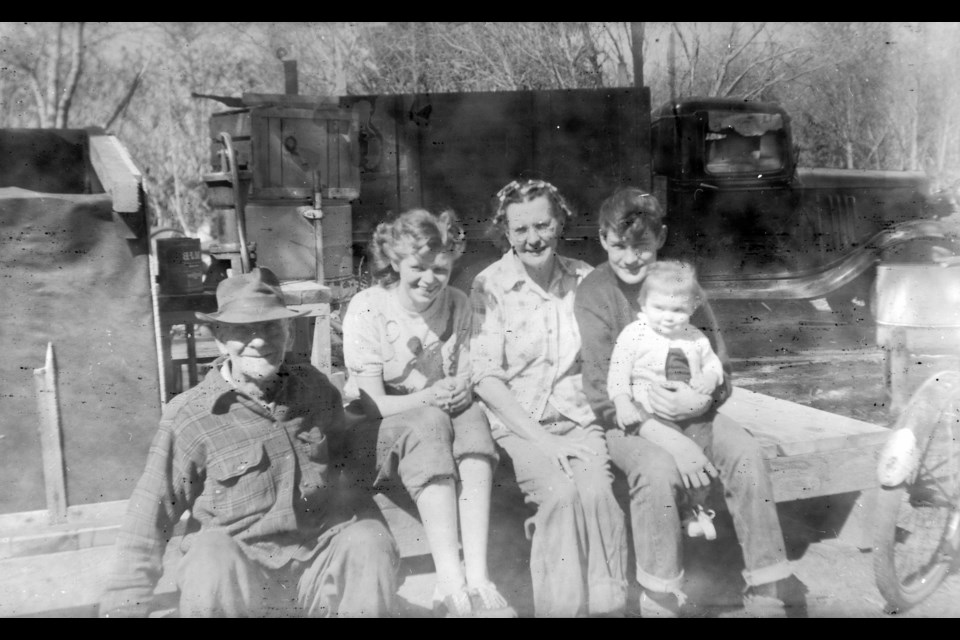In the digital age, most photos are seen by human eyes quickly, sometimes within seconds of being shot.
Sometimes it's longer. With film it always is, often days if not weeks before a captured image sees the light of day.
In this case it's a bit longer. Likely more than nine decades.
Jim Sollows is a photographer with a serious interest in old cameras and film. For example, he recently rebuilt a camera from the 1870s, fitting it with some more modern pieces to shoot on film (instead of glass plates) so he can use it. This isn't that story.
Like an unsuccessful bakery, he had an old roll
The Fort Langley resident and his wife often pop into antique shops while out and about, and on a trip to Vancouver a little while ago they stopped in at Stepback in Kitsilano.
"I ended up getting into a discussion with the proprietor. When I mentioned I do darkroom work and occasionally come across old film and develop it, he reached under the counter," Sollows says.
What he produced was a roll of film. A very old roll of film.
"He asked 'You ever seen this before?'" says Sollows. "I said 'I've heard of it, but I've never seen it.'"
It's a roll of 130 film, a format that produces postcard-sized negatives. It hasn't been produced since the 1960s. The specific film Sollows was given is Verichrome, a type of film that was discontinued in the early 1930s due to its flammability (it was replaced in the market with Verichrome 10).
Sollows has developed old film before, but mostly from the 1950s or later. While he doesn't know exactly how old it is, it's definitely older than anything he'd tried developing before.
He took the roll home, where—as a serious hobbyist—he has his own darkroom, a 10 ft. by 10 ft. windowless space to bring film to life.
"I have everything necessary for processing film and printing it," he says. "And also have the capacity to take film and digitize it."
With film resurging as of late (he notes two new films just hit the market) there's lots to try with processing negatives; he even teaches a course in it. But film nowadays comes in smaller formats: 35 mm or 120.
"One of the complications is this old format is it's larger than any rolled film that we have today," he says.
Another complication is that if you leave a roll of film lying around for nearly 100 years, it always wants to curl up again. So in his pitch-black darkroom, fighting with the extra-long roll trying to recoil itself "like an anaconda of film" Sollows see-sawed the antique plastic through his chemicals.
"I literally stood there, fighting with it, trying to get it into the developer," he says.
Eventually, he was satisfied with his efforts and exposed the photos to light to urge the images out. Of the six frames, three turned into pictures.
"My heart skipped a beat; these pictures were old, very old," Sollows says.
What's the opposite of a Polaroid?
The three photos he was able to coax out show what appears to be a family gathering, but other details are hard to pick out.
"The first one I saw—there's an older gentleman and a very young girl, maybe two years old, sitting on maybe the stoop of a house or a bucket," Sollows says. "He looks like a farmer out of the depression and he's sitting there with this young girl."
A second photo shows a similar scene, with a middle-aged man and the same child.
The third is a group shot, with five people in it; there's the older man and the child again, and this time they're joined by two women and a young man.
There are no clues on the roll, so Sollows has tried to learn more from the images themselves. After speaking with others he says the vehicle in the background may be a 1920s agricultural truck. Also, part of a 1920s wringer washing machine appears in the shots as well.
"Normally with photos like this I look for things like street signs or business signs or license plates," Sollows says. "We don't have anything like that in these photos."
His best guess is that they're from B.C., because of where he got the film from. He's spoken to Stepback, but they're not sure where the roll came to them from. As for when, with the film being discontinued in the early-30s and the age of the truck and washing machine, he's guessing they were shot in the late 20s or early 30s.
So now he's wondering whose work he finished.
"To me it's so awesome to know that back, maybe 100 years ago, some photographer, who we'll never know who that was, took those pictures and never finished," Sollows says. "And here I am in 2022 finishing what they started."
If you know who the photos are of, he'd love to hear from you, either through Instagram or his website.



